Investors in high yield InfraCap MLP ETF (NYSE: AMZA) were shocked to get the news of a 36% dividend reduction. Fortunately, there is no reason to panic, and there are some good lessons to be learned from the past and future history of AMZA.
AMZA is an actively managed exchange traded fund that owns a portfolio of publicly traded master limited partnerships (MLPs). The MLP sector is known for high current yields. The AMZA management boosted the fund’s income with call options selling. A $0.52 per share quarterly dividend had been paid since the start of 2016. With the fund’s shares trading between $7.00 and $11.50 over the last two years, the result was a yield in the high teens to mid 20% range.
On Friday, January 19, the fund management company announced the dividend would be switched to a monthly payment of $0.11 per share. This lowers the annual dividend amount to $1.32 from the previous $2.04. This was a prudent move by management to keep the dividend stable as the fund continues to go through significant growth pains. Instead of going deeper into the reasons for the dividend change, I want to cover some lessons learned.
Lesson 1: An ETF is not a stock. I received a lot of questions asking if the AMZA share price would drop due to the dividend cut. That typically happens with a company cuts its dividend. However, as an ETF, the AMZA share price is not determined by investor sentiment. The share price is a mathematical calculation of the value of the portfolio divided by the number of shares held by investors. AMZA moves up and down generally along with the overall MLP sector. It does not matter to the share price whether the dividend has been cut.
Related: The Safe Monthly Dividend Stock to Buy and Hold Forever
Lesson 2: Compound reinvestment of a high yield security is a very powerful wealth building strategy. If you look at theis price chart showing the Alerian MLP Index and AMZA over the last two years, it looks like it would be impossible to have gains in the MLP sector over the full period. MLPs went through a steep correction to start 2016 and then a bear market that lasted most of 2017.
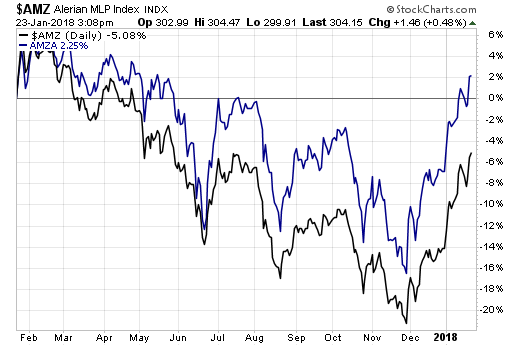
Yet, if you took those big dividends from AMZA and bought more shares, you would now be well ahead. Here is the math. One thousand shares purchased at the start of 2016 cost $11,200. If the dividends were reinvested at a price near the ex-dividend date price each quarter, the quarterly dividend payments would have grown from $520 paid in January 2016 to $777.92 earned in January 2018. Total dividend earnings were $5,763. Reinvesting those dividends resulted in a current total share count of 1,587. At the current share price of $8.88, those shares are worth $14,093. Through an ugly stretch for MLPs, the investment grew by 26%. At the new, lower dividend rate, the current number of shares will generate about $175 in monthly income, an 18% yield on the original investment amount.
The next step is to get a sustained uptrend from MLPs, and it looks like one started in November 2017.
Lesson 3: If you are an income investor, don’t focus on the share values in your brokerage account. Keep track of your dividend income, reinvest some or all that income and over time your income stream and account value will grow. It’s powerful math that is not obvious when you look at share prices and price charts.
AMZA has entered a new phase in its life, and I am excited to see where it goes from here. The yield is still a high 15% and the MLP sector fundamentals are the strongest they have been since 2014.
Source: Investors Alley
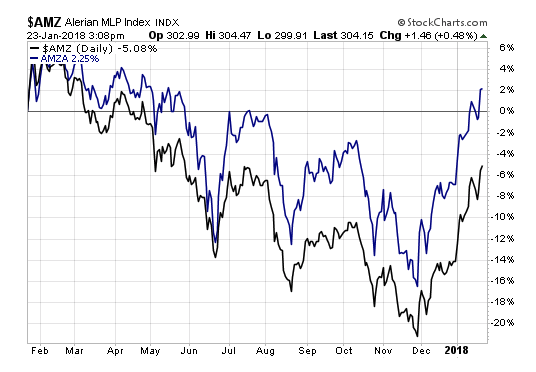
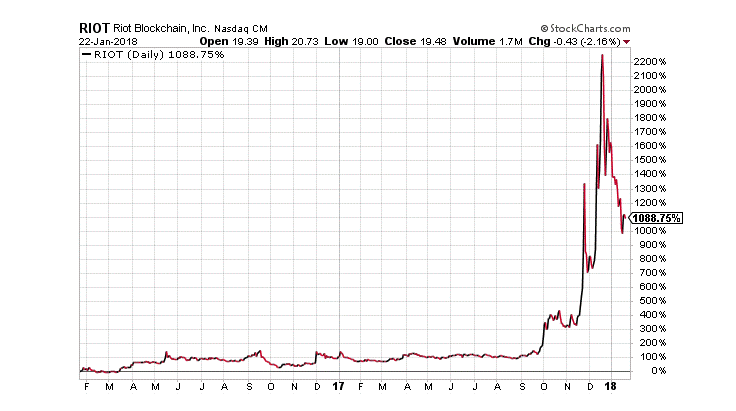
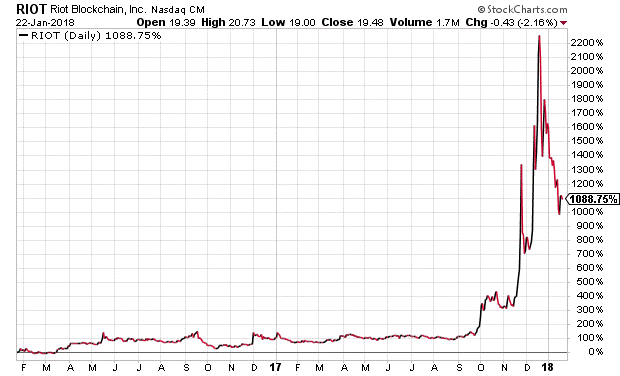
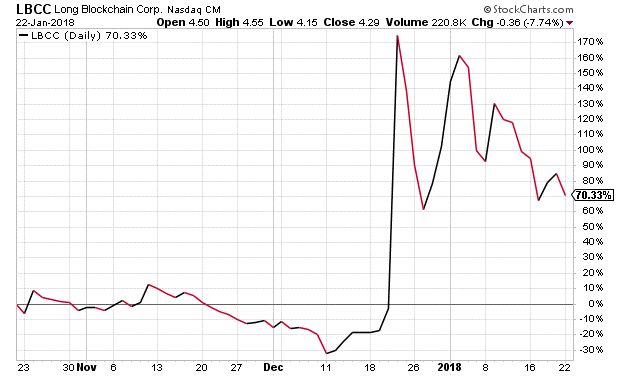
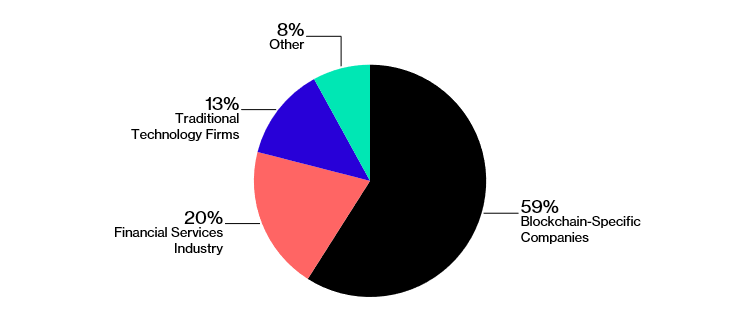
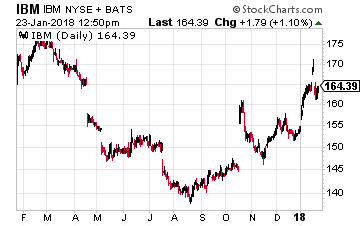 Tied for second on the list are Mastercard (NYSE: MA) and International Business Machines (NYSE: IBM). The latter was one of the very first big companies to see the promise of blockchain, contributing code to an open-source effort and encouraging start-ups to try the technology on its cloud for free. What really caught my eye regarding IBM’s blockchain efforts was a recent announcement.
Tied for second on the list are Mastercard (NYSE: MA) and International Business Machines (NYSE: IBM). The latter was one of the very first big companies to see the promise of blockchain, contributing code to an open-source effort and encouraging start-ups to try the technology on its cloud for free. What really caught my eye regarding IBM’s blockchain efforts was a recent announcement.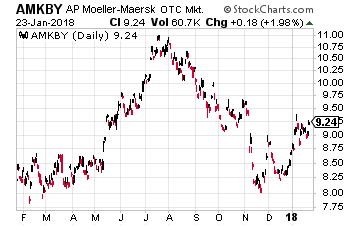 The words supply chain bring me to what I consider to be a major announcement last week from IBM and the world’s largest shipping company, AP Moller Maersk A/S (OTC: AMKBY). The two firms are setting up a joint venture to use blockchain technology in order to help make the companies’ supply chains more efficient.
The words supply chain bring me to what I consider to be a major announcement last week from IBM and the world’s largest shipping company, AP Moller Maersk A/S (OTC: AMKBY). The two firms are setting up a joint venture to use blockchain technology in order to help make the companies’ supply chains more efficient.